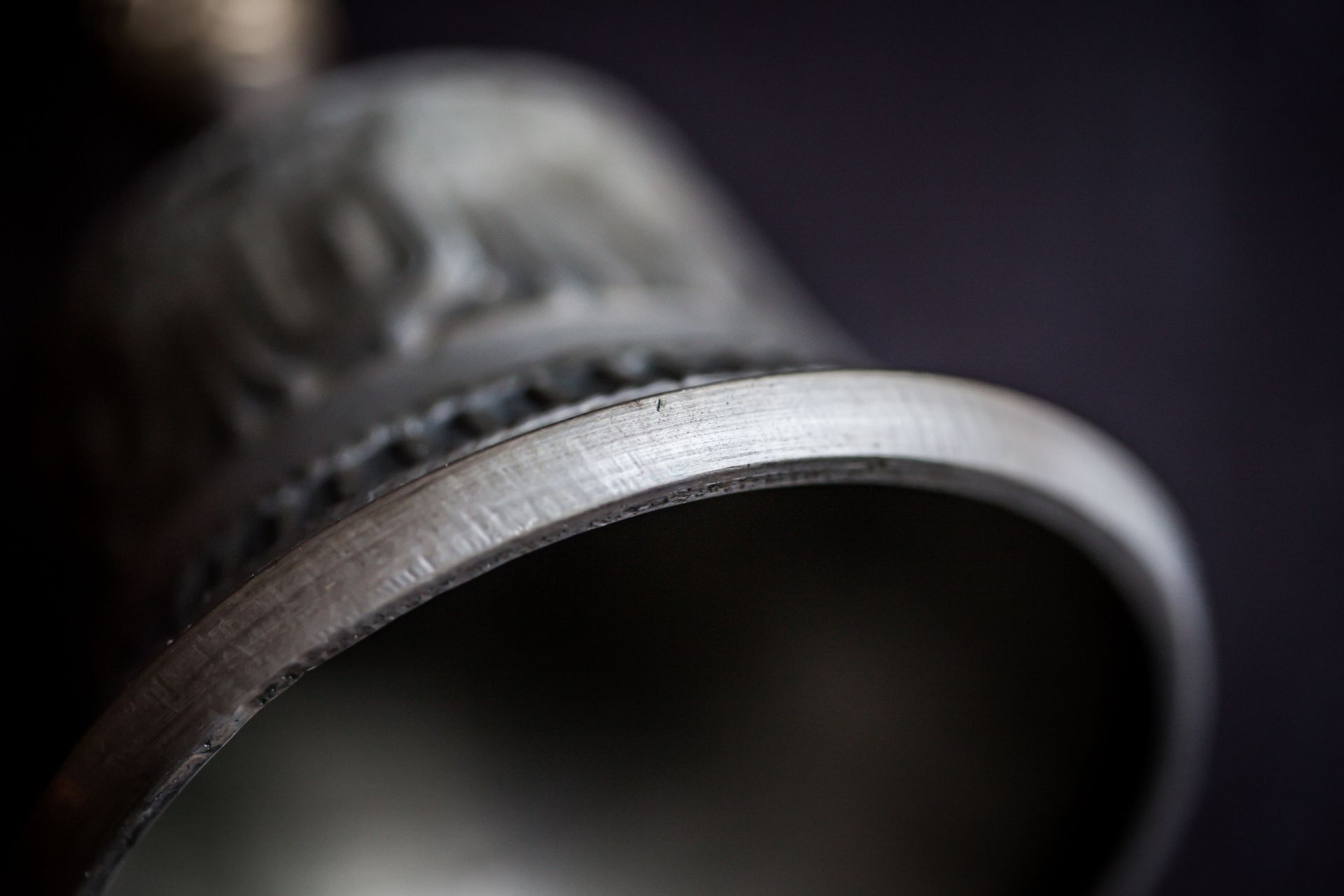When it comes to decorative alloys, pewter has made a comeback in recent years in the jewelry and crafting industries. This versatile alloy can be found throughout the jewelry world as plated rings, necklaces and bracelets. It is also fashioned into medals, pendants, figurines, statues, and replica coins. Many people may not actually know that the decorative object is actually pewter, as it can be polished to resemble silver or platinum metals.
Pewter consists of mostly tin, roughly 85 to 95%, with antimony and copper added as hardeners. It also may possess bismuth and sometimes silver. Lead is another additive to harden pewter, although lead-free pewter can be found for applications that will be used against the skin or that will come in contact with food. When used for decorative purposes, pewter will be chosen due to its casting capabilities because it is a soft material. So it is highly desired when creating intricate designs. Due to the many varieties of pewter based on their compositions, you have a wide selection to choose from for your project.
Pewter Types and Applications
Britannia
Also referred to as Britannium, Britannia contains about 91 to 93 % tin with copper and antimony added for hardening. It is used in spin cast molds as the pewter is poured in liquid form into a mold that is spun by its axis. Britannia is often used in costume jewelry where maximum detail and strength is desired. You can also find Britannia in statuettes, most notably the Oscar award statues. Britannia is considered lead free.
Gravity Cast lead-free pewter
Gravity cast lead-free pewter contains roughly 91 to 93% tin with antimony and a high amount of copper added. An open faced mold is used, along with cast iron and sand molds, where it is preheated and coated in a refractory material to prevent the pewter mold from sticking. Then molten pewter is poured into the mold and allowed to solidify before being removed. Gravity cast lead-free pewter can be used in a range of applications — from jewelry making to creating game pieces.
Tin Pewter
Tin pewter is a cost-effective metal for a range of decorative applications such as figurines and models. As more tin is added to the pewter, it will have a lower melting point with increased weight. Special Tin Pewter has 92% tin and a better castability than lead-free Britannia. If you plan to reuse your molds repeatedly for a long duration, tin pewter can provide better mold life than other metal alloys.
Lead-Free Pewter with Bismuth
Bismuth has only recently been added to pewter since the 1980s. It became a valuable replacement for lead to provide a pewter metal that is less toxic to people. Pewter with bismuth is highly desired during the molding process to prevent the pewter from shrinking as it is also malleable. This metal can also be used in spin casting. Applications for lead-free pewter with bismuth include jewelry, award medals, decorations and other novelty items.
Consider the application that you wish to create, the properties of the end piece, and the casting process to decide on the best pewter metal to use. Here at Belmont Metals, we are your non-ferrous metal and alloy manufacturer. When you are looking for a variety of pewter metals, we can provide you with shot pieces as well as 5 section – 6lb and 5 section – 8lb ingot pieces. Reach out to our staff today to ask about our pewter selection as we can help you decide on the right metal that will give you a high quality application.

